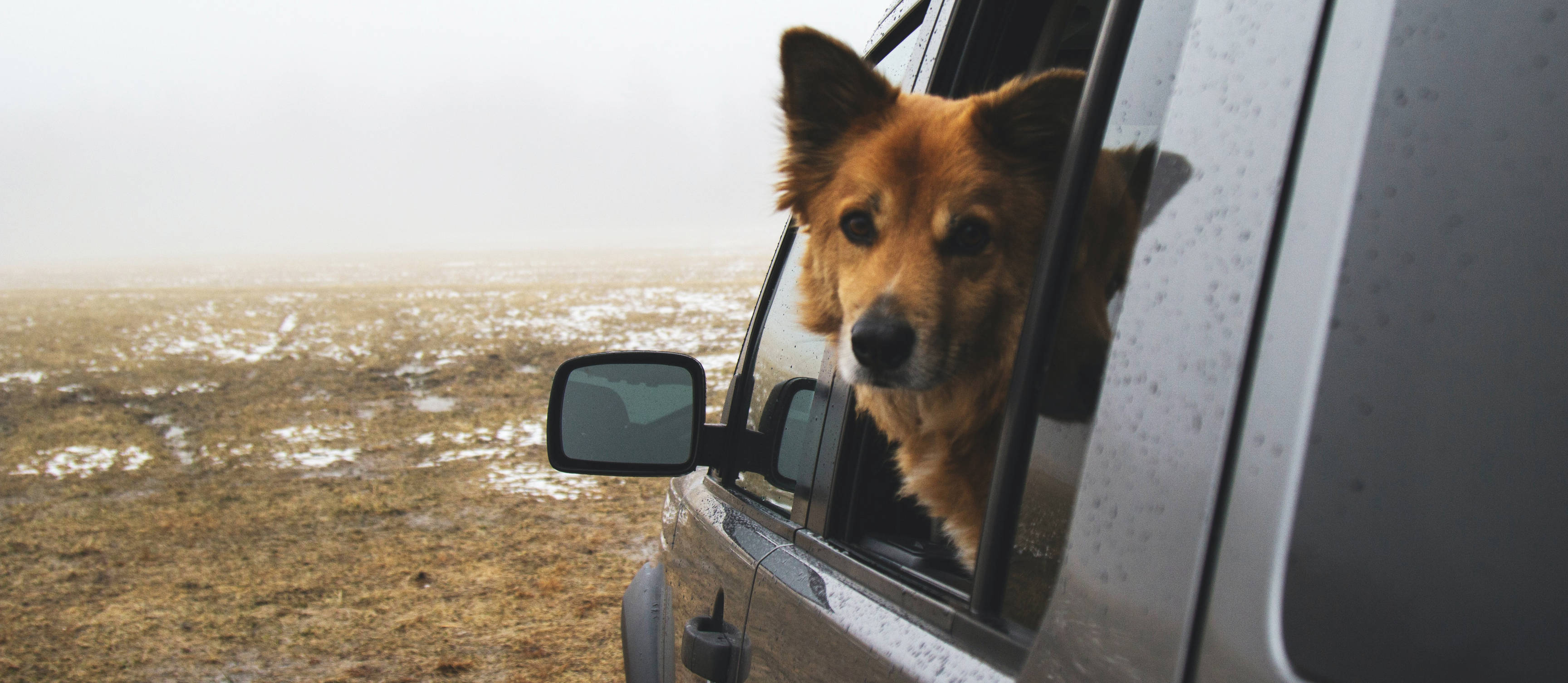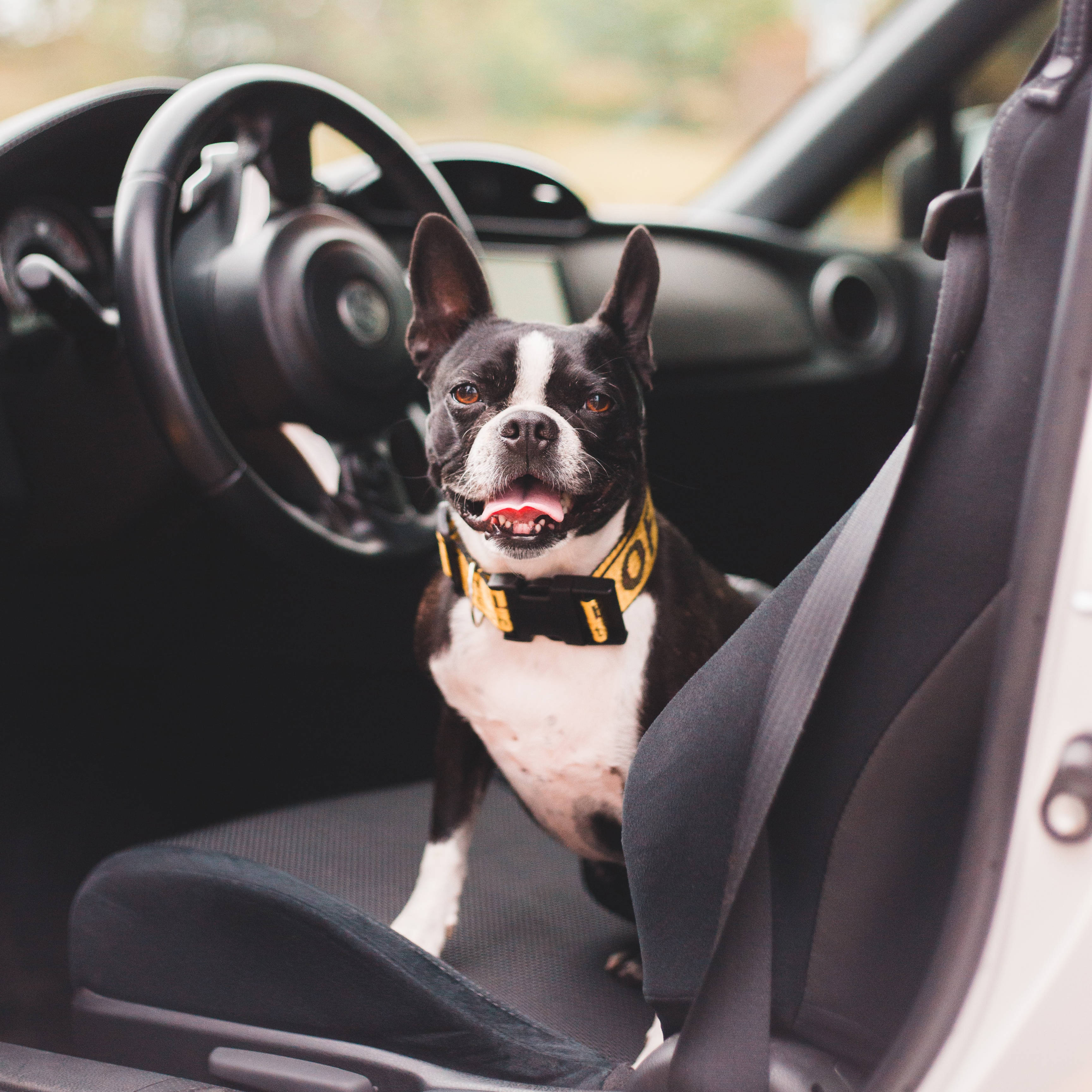Travelling by car
Hey buddy, did you know that the car ride, depending on the time and conditions, can be hard for the dog? Also, depending on the destination, the weather conditions (heat, humidity, etc.) may not be ideal because we dogs are used to the climate of our country.
Even if you love your dog very much, it is sometimes preferable to leave him at home with a dogsitter, with a relative or in a pet boarding.
On the other hand, if the conditions are ideal, have a look at the following tips! 😊
How do you get your dog used to the car ride?
First of all, it is necessary to get him used to travelling by car from a young age.
He must combine this with positive experiences.
Here are a few tips on how to do this:
- Lure him into the stationary car with treats, play with him, give him something to chew on while you stand beside him.
- The next day, do the same thing but turn on the engine. Distract him by stroking and giving him treats.
- On the third day, if your dog was comfortable during the previous step, do the same thing and add a short distance.
If he drools and/or vomits, he is suffering from motion sickness. Talk to your veterinarian.
Well-being and safety?
- Ideally, take a long walk to tire him out so he should be less stressed and agitated.
- If he gets motion sickness, don't hesitate to make an appointment with your veterinarian to give you medication and don't overeat him to avoid vomiting.
- Take a break every 2 hours to walk him and give him something to drink.
- There are several ways to secure the dog: the transport crate, the safety harness connected to the seat belt with specific equipment or put him in the trunk with a dog barrier.
- If you choose to use a transport crate, you must gently get him used to it, first by installing it in your home with the door open and by giving him his meals inside as well as things to chew on, and then later, when he is comfortable with, you can put the crate in your car.

Here are a few tips on how to do this:
- Give him some treats so he can get in on his own. As soon as he goes in on his own, reward him with treats.
- Once he's comfortable, have him sleep in it during the night without closing the crate door (yes, in Switzerland, it's forbidden to lock a dog in a transport crate, except in a car).
- Here, too, his experiences must be positive. Congratulate him and give him treats.This will make him feel safe more quickly.
- Putting one of his blankets on him can also reassure him.
If, despite these attempts, your dog is in a state of panic (panting, blocking, agitation, aggressiveness...), don't insist and talk to a behaviorist veterinarian. It may be a behavioral pathology that is incompatible with car travel.
The cage must also be adapted to his size, he must be able to get up, lie down and turn around.
If you choose to use the harness or the trunk, it is the same principle, gently get him used to it with positive experiences.
- Never leave your dog alone in the car during the summer because of the heat, even in the shade and with the windows open.
-
Oh and if like me, your dog loves to put his face through the window, be careful though, because foreign bodies can quickly get into his beautiful little eyes!
And if your dog has bulging eyes like French bulldogs, pugs: due to their morphology, their eyes are prone to dryness (draught and air conditioning) and therefore to the formation of corneal ulcers. Make sure to moisturize his eyes with artificial tears for dogs before and during the trip!
Where to go?
- Check the legislation (vaccines, quarantines, etc.) in the selected country. Some countries even refuse entry to foreign animals or certain breeds.
- Find out about the conditions of transport by car (cage or net mandatory depending on the country).
- Find out about the climate in the destination country at the time of your planned trip, is it ideal for your dog?
- For Mediterranean regions and countries (south of France, Italy, Spain, Portugal, Greece...), pay attention to the prevention of diseases transmitted by biting insects: cardiopulmonary filariasis, or heartworm disease, and leishmaniasis! Talk to your veterinarian to have peace of mind!
- Find out if the chosen destination is "dogfriendly" (hotels, activities, transportation, etc.).
You can find all this information for Switzerland on our DFS map right here !
What to take along?
It depends on the duration and the destination.
Otherwise, find all these elements on our travel checklist here!
Where your dog travels?
According to the Road Traffic Act, the transportation of a dog is considered a transportation of goods. It must therefore neither disturb nor endanger the driver and his passengers.
However, the safety and well-being of the dog must be ensured during the journey.

In summary?
- Accustoms the dog to the car in a progressive and positive way.
- There are three legal and safe ways to transport your dog in the car (transport crate, harness and seat belt, trunk with protective barrier).
- Never leave your dog in a stationary car when it's hot.
- Take regular breaks.
- Contact your veterinarian to find out if vaccinations and preventive treatments are required depending on the destination.
- Check the entry requirements of the destination country.
- Find out if the destination you have chosen is "dogfriendly".
Content validated by :




